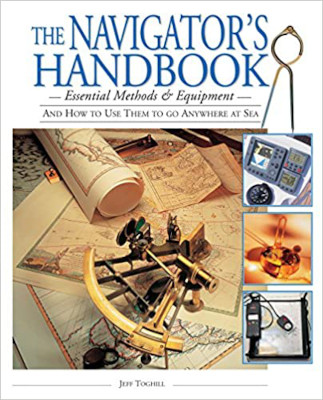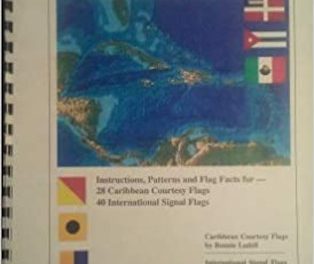
What a handsome book this one is! Glossy paper, attractive page composition, nice diagrams, and some splendid photographs: gleaming varnish and brass on a classic wooden yacht and a stunning view of a white stone lighthouse glowing fiery-red in the last moments of a sunset. Then there is a startling photo of Ellen MacArthur (the fastest woman circumnavigator) sitting mid-ocean at her nav station: sunburned, red-eyed, and looking suitably terrified.
Once past the beauty, however, the book claims too much. To be sure as claimed ” . . . this book, together with a club membership and good training, will ensure that seafaring skills of navigators are never wanting.” But, if the reader had good training and experienced sailing mates, would he or she need this book?
Indeed, the book will provide, as is claimed ” . . . an introduction to the art of navigation for boatowners new to the subject . . . ” but a handbook or a reference book it is not. A novice at celestial navigation (like myself) would have been better served by a single worked-out example, rather than beginning by instructing the reader to first ” . . . take a sextant altitude of Polaris.”
The British author doesn’t escape writing a book that is mildly Euro-centric: U.S. readers will be surprised to learn that: “Charts can be in fathoms or metres but eventually all charts will be metric,” or that ” . . . most charts are produced by the Hydrographic Office and . . . are known as Admiralty Charts.” U.S. readers might be mislead by the discussion of chart soundings in which the chart datum is said to be taken from the “lowest astronomical tide,” rather than Mean Low Water data on which U.S. charts are based.
Still, the book has virtues. For dinghy sailors with ambitions, it would be a useful introduction. Inexpensive at $16.95, it makes a nice gift. There are reasonably clear and simple discussions of laying off courses, leeway, dead reckoning, and compass bearings. There is a short overview of electronic navigational tools and charts useful for a person who is unfamiliar with them.
This is a book for wishing, one for sailors with no previous navigation experience who want to brave big waters. The next step would be for readers to find books like Piloting and Dead Reckoning, by Schufeldt, Dunlap, and Bauer, and the U.S. Sailing Association’s Basic Coastal Navigation.
The Navigators Handbook by Jeff Toghill (The Lyons Press 2003; 128 pages)




